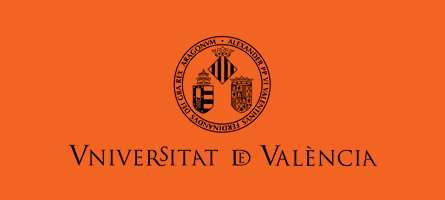What are data sprints for?
DOI:
https://doi.org/10.7203/drdcd.v1i8.253Resumen
The data sprint approach enables various objectives for the digital methods community, from fostering interdisciplinary collaboration to providing teaching-learning spaces regarding creative methods. However, data sprints’ purpose, advantages and concrete results are still little known across disciplines. Thus, this paper presents four facets pertaining to and deriving from data sprints to explain their prospects for different (non-) academic communities. First, we define the data sprint approach, providing a detailed description of what data sprints are and what they involve in practice and, in turn, propose guidance to facilitate the replicability of this work method. Second, we elucidate how data sprints are (1) a means of teaching and learning digital methods research, arguing that the data sprint environment is not only (2) a space for methods and tools creation but also (3) a reflective tool to understand the triad of data-, software- and platform-oriented research (from the standpoint of practice). Therefore, data sprints offer researchers situational ways to access and critique scientific knowledge production. Finally, we address a standard post-sprint procedure, which is the last facet: (4) the reutilisation of data sprint reports for producing scientific knowledge, through academic and non-academic publications, as an established research practice. The four facets unpack the data sprint approach for a broader audience whilst indicating the possible takeaways during and after such events. We conclude with reflections from and on data sprints.Citas
Berry, D. M.; Borra, E.; Helmond, A.; Plantin, J. C.; Walker Rettberg, J. (2015). The data sprint approach: exploring the field of Digital Humanities through Amazon’s application programming interface. Digital Humanities Quarterly, 9(3). Available at: http://eprints.lse.ac.uk/65438/
Bounegru, L.; Gray, J.; Venturini, T.; Mauri, M. (2018). A Field Guide to "Fake News" and Other Information Disorders: A Collection of Recipes for Those Who Love to Cook with Digital Methods. Public Data Lab. Available at: https://fakenews.publicdatalab.org/
Chao, T. H. J. (2021). Memespector GUI: Graphical User Interface Client for Computer Vision APIs (Version 0.2) [Software]. Available at: https://github.com/jason-chao/memespector-gui
Colombo, G.; Niederer, S. (2021). Visual Methods for Online Images: Collection, Circulation, and Machine Co-Creation. Diseña, 19. https://doi.org/10.7764/disena.19.Intro
D'Andrea, C.; Mintz, A. (2019). Studying the live cross-platform circulation of images with computer vision API: An experiment based on a sports media event. International Journal of Communication, 13: 1825–1845.
Gray, J.; Bounegru, L.; Rogers, R.; Venturini, T.; Ricci, D.; Meunier, A.; Mauri, M.; Niederer, S.; Sánchez Querubín, N.; Tuters, M.; Kimbell, L.; Munk, K. (2022). Engaged research-led teaching: composing collective inquiry with digital methods and data. Digital Culture & Education, 14(3): 55–86 Available at https://www.digitalcultureandeducation.com/volume-14-3
Huurdeman, H. C.; Ben-David, A.; Sammar, T. (2013). Sprint methods for web archive research. In Proceedings of the 5th Annual ACM Web Science Conference (pp. 182-190). ACM. Available at: https://dl.acm.org/doi/10.1145/2464464.2464513
Jacomy, M. (2022, 18 June). Call for participants: Gephi code sustainability retreat 2022. Gephi Blog. Available at https://gephi.wordpress.com/2022/06/18/call-for-participants-gephi-code-sustainability-retreat-2022/
Mauri, M.; Gobbo, B.; Colombo, G. (2019). O papel do designer no contexto do data sprint. In J.J. Omena (Ed.), Métodos digitais: Teoria-Prática-Crítica (pp. 161–180). ICNOVA.
Mauri, M.; Briones, M. A.; Gobbo, B.; Colombo, G. (2020). Research Protocol Diagrams as Didactic Tools to Act Critically in Dataset Design Processes. In INTED2020 Proceedings (pp. 9034–9043). Available at: https://library.iated.org/view/MAURI2020RES
Mauri, M.; Ciuccarelli, P. (2016). Designing diagrams for social issues. Design+ Research+ Society-Future-Focused Thinking, 3(5): 941-958.
Marres, N. (2020). For a situational analytics: An interpretative methodology for the study of situations in computational settings. Big Data & Society, 7(2), 2053951720949571.
Milman, N. B. (2012). The flipped classroom strategy: What is it and how can it best be used?. Distance learning, 9(3), 85.
Munk, A. K.; Madsen, A. K.; Jacomy, M. (2019). Thinking Through The Databody: Sprints as Experimental Situations. In M. E. Å. Mäkitalo, T. Nicewonger (Ed.), Designs for Experimentation and Inquiry: Approaching Learning and Knowing in Digital Transformation (pp. 110–128). Routledge. https://doi.org/10.4324/9780429489839
Niederer, S.; Colombo, G. (2019). Visual Methodologies for Networked Images: Designing Visualizations for Collaborative Research, Cross-platform Analysis, and Public Participation. Diseña, 14: 40–67. https://doi.org/10.7764/disena.14.40-67
Omena, J.J. (2021). Digital Methods and Technicity-of-the-Mediums. From Regimes of Functioning to Digital Research [Doctoral Dissertation, Universidade Nova de Lisboa]. http://hdl.handle.net/10362/127961
Omena, J. J.; Rabello, E. T.; Mintz, A. G. (2020). Digital Methods for Hashtag Engagement Research. Social Media + Society. https://doi.org/10.1177/2056305120940697
Ozdamli, F.; Asiksoy, G. (2016). Flipped Classroom Approach. World Journal on Educational Technology, 8(2), 98–105. https://doi.org/10.18844/wjet.v8i2.640
Pearce, W.; De Gaetano, C. (2021). Google Images, Climate Change, and the Disappearance of Humans. Diseña, 19, Article.3. https://doi.org/10.7764/disena.19.Article.3
Rogers, R. (2021). Visual media analysis for Instagram and other online platforms. Big Data & Society, 8(1), 20539517211022370.
Rogers, R.; Lewthwaite, S. (2019). Teaching Digital Methods: Interview with Richard Rogers. Interviewer: S. Lewthwaite. Diseña, 14, 12–37. https://doi.org/10.7764/disena.14.12-37
Venturini, T.; Meunier, A.; Munk, A.; Borra, E.; Rieder, B.; Mauri, M.; Azzi, M.; Ciminieri, D.; Uboldi, G.; Kaltenbrunner, A.; Laniado, D. (2014). Climaps by EMAPS in 2 pages (a summary for policy makers and busy people). SSRN. Available at: http://ssrn.com/abstract=2532946
Venturini, T.; Munk, A. K. (2022). Controversy Mapping: A Field Guide. John Wiley & Sons.
Venturini, T.; Munk, A. K.; Jacomy, M. (2018). “Data-Sprinting: A Public Approach to Digital Research”. In E. Lury, C., Fensham, R., Clough, P., Heller-Nicholas, A., Lammes, S., Last, A., Michael, M., Uprichard (Ed.), Handbook of Interdisciplinary Research Methods Routledge. Routledge International Handbooks. https://doi.org/10.4324/9781315714523
Descargas
Publicado
Número
Sección
Licencia
Los autores conservan los derechos de autor y garantizan a la revista el derecho de ser la primera publicación del trabajo, licenciado bajo una Creative Commons Attribution License que permite a otros compartir el trabajo con un reconocimiento de la autoría del trabajo y la publicación en esta revista.
Cuando el autor/a envía su colaboración está explicitamente aceptando esta cesión de derechos de edición y de publicación. Igualmente autoriza a Dígitos la inclusión de su trabajo en un número de la revista para su distribución y venta.







